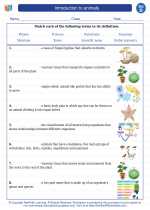Insects
Insects are a class of invertebrates within the arthropod phylum. They are the most diverse group of organisms on Earth, with over a million known species and potentially several million more yet to be discovered. Insects play a crucial role in various ecosystems, serving as pollinators, decomposers, and a food source for other animals.
Anatomy of an Insect
Most insects possess three body segments: the head, thorax, and abdomen. They also typically have six legs, a pair of antennae, and often wings. The exoskeleton of an insect provides support and protection, and their respiratory system consists of a network of tubes called tracheae, which deliver oxygen directly to the cells.
Life Cycle
Insects undergo metamorphosis, which is a process of transformation from egg to adult. There are two main types of metamorphosis: incomplete metamorphosis, where the young (nymphs) resemble adults but are smaller and lack wings, and complete metamorphosis, which involves distinct larval, pupal, and adult stages.
Diversity of Insects
Insects are incredibly diverse, with species found in almost every environment on Earth. They range in size from tiny parasitic wasps to large beetles and stick insects. Insects also come in a variety of colors and have adapted to various feeding behaviors, from herbivores and carnivores to detritivores.
Importance of Insects
Insects play a crucial role in maintaining ecological balance. They help in pollination, decomposition of organic matter, and serve as a food source for other animals. Insects also have economic importance, both as pests that damage crops and as beneficial organisms used in biological pest control.
Study Guide
- What are the three main body segments of an insect?
- Describe the process of metamorphosis in insects.
- Give examples of different types of insects and their adaptations.
- Explain the ecological importance of insects.
Understanding the world of insects is not only fascinating but also essential for comprehending the intricate web of life on our planet. Exploring the diversity and significance of insects can lead to a deeper appreciation for the natural world around us.
.◂Science Worksheets and Study Guides Fourth Grade. Introduction to animals

 Worksheet/Answer key
Worksheet/Answer key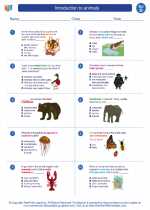
 Worksheet/Answer key
Worksheet/Answer key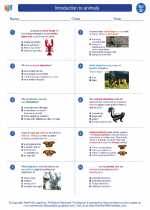
 Worksheet/Answer key
Worksheet/Answer key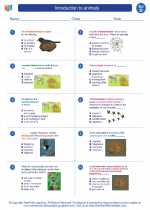
 Vocabulary/Answer key
Vocabulary/Answer key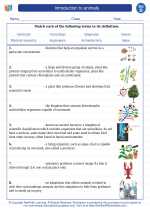
 Vocabulary/Answer key
Vocabulary/Answer key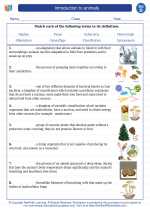
 Vocabulary/Answer key
Vocabulary/Answer key
 Vocabulary/Answer key
Vocabulary/Answer key